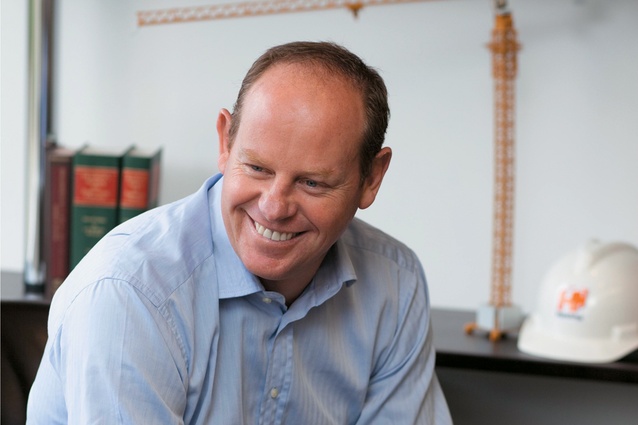Hawkins Construction CEO in profile
When Chris Hunter was an 18 year old quantity surveyor, he tried his hand at becoming a golf pro. After a year of perfecting putting full time - which he looks back on as not long enough - he went back to the building industry with goals for a bright future in it.
More than 20 years later, as chief executive of Hawkins he has been concentrating on at once consolidating and expanding the business with a new branch recently opened on the island of Guam and the company’s first job in Melbourne about to begin.
In the time Mr Hunter has been at Hawkins the business has consolidated into one cohesive company, expanded throughout New Zealand and internationally, going from being a $100 million company to achieving an annual turnover in excess of $760 million.
He joined the McConnell group of companies in the year 2002 as chief operating officer. Over a short period of time these companies reduced to just Hawkins, at which time Mr Hunter stepped in as its chief executive. At the time it did the bulk of its business in Auckland with smaller offices in Hamilton, Rotorua and Christchurch.
“I stepped in as CEO for Hawkins in April 2003. From there we’ve grown the company geographically wide across New Zealand so that we’re a true national player and then started to grow market share in each of those regions. We’ve added a few new services to each of those: construction, interiors, infrastructure. In the last five years we’ve grown a position in that infrastructure market as well as a strong position in pure commercial construction.”
Hawkins recently picked up its first job in Australia, working on a $400 million private public partnership prison in Melbourne. “Everyone’s nervous about Australia because there have been many New Zealand companies in our field that have gone there and come back with their tail between their legs. I guess it’s a matter of understanding those markets and how you play in them and respect them, work out how to make a sustainable business. Our strategic long term view has been to move into there respectfully, learn and then grow - rather than just going in there saying we’ve got a solution based on our knowledge and skills here in New Zealand,” Mr Hunter said.
“It’s a different business environment over there to New Zealand. It has some similarities in terms of relationships and networks being important but it’s also a very commercial, hard-nosed business environment so you’ve got to perform, you can’t rely on relationships to sort out poor performance.”
Recently, Hawkins opened a branch in 549,000sq m island nation Guam as the second of its plans for future international expansion. Despite having a population of only 160,000 the US territory has big opportunities for the type of work Hawkins performs.
“There is a range of projects there and a lot of it is driven off the United States government needing to relocate 17,000 soldiers off the mainland of Japan - that comes with virtually all the type of services we can offer. It gives us an opportunity to push in through, it’s just a matter of identifying which ones meet our criteria and look to expand within that market as time goes on.”
Closer to home, Hawkins has been busy in Christchurch carrying out earthquake response work. Mr Hunter flew to the troubled city as soon as he could on the morning of February 23 to “lend a hand to the boys” and make sure all 160 staff were safe. The company’s services were needed by Civil Defence immediately after the disaster. Since then it has been working with new and existing clients and doing work such as installing temporary lecture theatres at Canterbury University and pricing the construction of 250 temporary homes for the Department of Building and Housing, a job it has since secured.
“We’ve been busy on a number of fronts down there and probably the biggest one for us is IAG Insurance - we’re helping respond to their clients needs, putting programs in place to support the rebuild and the repairs of the multi thousand claims that they’ve got. Just thinking through issues around the supply chain and the resourcing of that, it’s still a little uncertain as to how that’s going to flow out. Everyone including government is still trying to get enough data to get some reasonable plan in place that we can all respond to and gear up to.”










